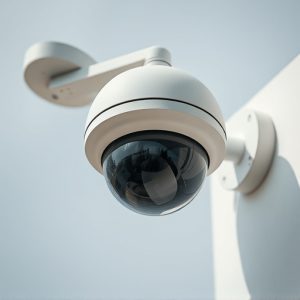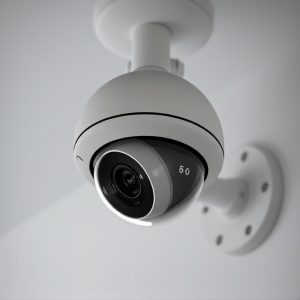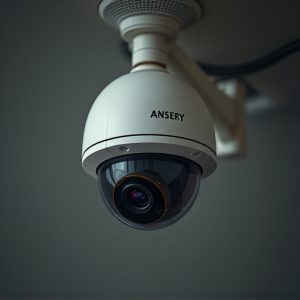Wireless Dummy Cameras: Dome vs Bullet – Choosing the Best for Security
Wireless dummy cameras, including Fake Dome and Bullet designs, offer cost-effective home security w…….
Wireless dummy cameras, including Fake Dome and Bullet designs, offer cost-effective home security with advanced motion sensors that trigger alerts to smartphones. Dome cameras blend discreetly indoors while Bullet cameras provide superior outdoor visibility, night vision, and adjustable mounting. Key considerations for selection include placement (indoor vs. outdoor), desired coverage area, image resolution, night vision, connectivity, battery life, and motion detection range, catering to diverse security needs.
Wireless dummy cameras with motion sensors are a smart security investment, offering both visual deterrence and peace of mind. This article delves into the world of these innovative devices, exploring their key components and functionalities. We’ll compare popular types, like dome and bullet cameras, highlighting benefits and features unique to each. Understanding installation tips and selecting the right dummy camera ensures optimal security for your home or business. Discover which option—fake dome or bullet camera—better suits your needs.
- Understanding Wireless Dummy Cameras with Motion Sensors
- Types of Wireless Dummy Cameras: Dome vs Bullet
- Benefits and Features of Each Camera Type
- Installation and Placement Considerations
- Choosing the Right Wireless Dummy Camera for Your Security Needs
Understanding Wireless Dummy Cameras with Motion Sensors
Wireless dummy cameras with motion sensors are a popular choice for home security due to their discreteness and ease of installation. These devices mimic real cameras, often in dome or bullet shapes, but lack lenses and image capture capabilities. Instead, they rely on advanced motion sensors to detect any movement within their range. When triggered, these cameras can send alerts to your smartphone or other devices, allowing for quick response times.
The term “fake” refers to the camera’s appearance as a decoy, designed to deter potential intruders while providing peace of mind. In terms of benefits, wireless dummy cameras offer flexibility in placement and are less susceptible to damage compared to traditional security systems. Compared to real dome or bullet cameras, they provide an equivalent level of protection without the need for complex wiring or costly installation. This makes them a cost-effective solution for home owners seeking additional security measures.
Types of Wireless Dummy Cameras: Dome vs Bullet
Wireless dummy cameras, also known as fake or mock security cameras, offer a cost-effective way to deter potential intruders. When choosing between a Fake Dome or Bullet camera, understanding their unique features is key. Dome cameras are popular for their discreet appearance and versatility; they can blend seamlessly into various environments due to their rounded design. This makes them an excellent choice for indoor spaces where aesthetics matter, such as homes, offices, or retail stores. On the other hand, Bullet cameras stand out with their cylindrical shape but provide a wider field of view, making them ideal for outdoor installations like front entrances, parking lots, or perimeters of properties.
In terms of performance, both types excel in motion detection, triggering alerts when activity is detected. However, Bullet cameras often offer better night vision capabilities due to their built-in infrared (IR) lighting, ensuring clear images even in low-light conditions. In contrast, Dome cameras might rely on traditional sensors and have limited functionality in complete darkness. The choice between them depends on specific installation needs; for discreet indoor security, a Fake Dome camera is often preferred, while Bullet cameras excel in outdoor applications where visibility and wide-angle coverage are essential.
Benefits and Features of Each Camera Type
Wireless dummy cameras, also known as fake dome or bullet cameras, offer a range of benefits for home and business security. One of their key advantages is the motion sensor technology they employ. These sensors detect any movement within the camera’s field of view, triggering instant alerts to your smartphone or security system. This feature ensures quick response times, allowing you to monitor and address potential issues promptly.
In terms of features, fake dome cameras often come with a wide-angle lens for comprehensive coverage and night vision capabilities thanks to infrared LED lighting. Bullet cameras, on the other hand, provide clear, detailed images with high-resolution sensors and zoom functions. Both types offer remote access via apps, cloud storage for footage, and weatherproof designs suitable for outdoor installations. The choice between them depends on your specific needs: dome cameras blend seamlessly into indoor spaces, while bullet cameras offer enhanced visibility and flexibility through adjustable mounting and zooming capabilities.
Installation and Placement Considerations
When installing wireless dummy cameras with motion sensors, whether choosing a Fake Dome or Bullet Camera design depends on your specific needs and preferences. Domed cameras offer a more concealed setup, making them ideal for indoor locations where discretion is key. On the other hand, bullet cameras have a sleek, visible profile that can serve as a deterrent to potential intruders, suitable for outdoor applications.
Placement considerations vary based on camera type. For dome cameras, discrete placement in corners or less obtrusive areas ensures they remain unnoticeable. Bullet cameras, with their distinct shape, benefit from strategic positioning where they can be easily seen, such as near entryways or windows, to serve as a visual warning against unauthorized access.
Choosing the Right Wireless Dummy Camera for Your Security Needs
When selecting a wireless dummy camera with motion sensors, understanding your security needs is paramount. The choice between a Fake Dome and a Bullet camera depends on your specific requirements and preferences. Dome cameras offer a panoramic view, making them ideal for spacious areas like homes or offices where you want comprehensive coverage. Their sleek design blends seamlessly into the environment, maintaining an unsuspicious presence. On the other hand, Bullet cameras are known for their robust construction and adjustable lenses, making them suitable for outdoor installations facing specific directions.
Consider factors such as resolution, night vision capabilities, connectivity options (Wi-Fi or Bluetooth), and battery life when evaluating these camera types. Higher resolutions ensure clearer images, while advanced night vision technology enhances visibility in low-light conditions. Additionally, checking the sensor type and motion detection range can significantly impact the camera’s effectiveness in triggering alerts.
Wireless dummy cameras with motion sensors offer a cost-effective and discreet way to enhance home security. Understanding the nuances between dome and bullet types, each with its unique benefits and installation needs, is crucial in selecting the ideal fake camera for your specific requirements. By considering factors like sensitivity, field of view, and weather resistance, you can ensure a reliable security solution that discourages potential intruders without breaking the bank. Whether you opt for a Fake Dome or Bullet Camera, the right choice will contribute to a safer and more secure environment.


